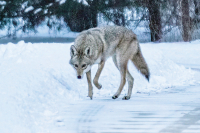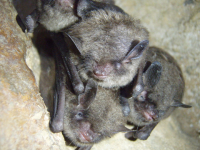X marks the spot
In that spirit, I have never treated my birthday as a retrospective landmark until now. Thirty-five years is half a lifetime, a place from which to look backwards and forwards. I won’t get too deep into my personal assessment of my career, life, and philosophical goals, but I wanted to write about the fact that for the first time I relate to my generation’s label.
I’m a Gen X-er, the name used to describe the post-Vietnam offspring of baby boomer parents. Gen X-ers grew up during the last throes of the Cold War, came of age during the dawn of the Internet, and make less money than their parents did.
The phrase Generation X comes from much further back. It was the title of a 1965 journalistic study of Britain’s youth culture, authored by Hamblett and Deverson, describing a movement in young people who “sleep together before they are married, were not taught to believe in God as ‘much’, dislike the Queen, and don’t respect parents.”
Billy Idol, the ‘80s pop punk icon, named his first band Generation X, but its impact as a real social phenomena in America happened in the early to mid ‘90s.
My generation, as young adults, experienced profound ennui. We rejected the world our prosperous parents laid out for us on a platter in favor of becoming nomadic, anonymous, and hedonistic.
Remember “Reality Bites?” My generation’s icons are Kurt Cobain and David Foster Wallace. Suicide talents. And our films are “My Own Private Idaho,” “Boyz in the Hood,” and “True Romance.”
I never thought of myself as part of Generation X. I was never a grungy, café-loitering near-poet. I grew up in Washington, D.C., a city full of contradictions, and I found the world mostly contradictory. I wore a blazer to school and put A Tribe Called Quest and U2 on the same cassette tape.
Trying to label a generation is silly, in some ways, because people don’t change that much. But the labels can be a helpful thumbnail sketch of how a group of people’s circumstances shape the narrative of the individual in relation to society. They also help us differentiate ourselves from our parents and our children.
Generation X, as we are called, grew up during a watershed. I remember, distantly, air raid drills in kindergarten, but I also remember when the Berlin Wall came down, then when dead American soldiers were dragged through the streets of Mogadishu. I remember when the War on Drugs began, the first time I heard Public Enemy, and my first rave. I remember writing term papers with a pen in high school. I remember registering for my first Hotmail account as a freshman in college, and I remember when people just a few years older than me starting making millions during the dot com boom.
You don’t hear the term Generation X much anymore. Recently, more attention has been paid to my grandparents’ generation, The Greatest, and my parents’ generation, The Boomers, because America is aging.
The generation younger than me, Generation 2.0 or Y2K or whatever they end up getting stuck with, grew up playing video games in a fast-paced world, have a very proactive mindset and tremendous business acumen.
I doubt my grandparents would have sat around thinking about how great they were, and I know my parents don’t find commonality with their peers for having survived the late ‘60s and then succeeding in their professions.
If there is meaning to our own tag as Gen X-ers, it is that we mainly rejected the doctrine of prosperity, and having done so, refused to grow up. I have a lot of friends who fit the bill. Where our Peter Pan feet have tread, we have created hip-hop culture, body art, the indie rock world, the blog, and the X games.
The X is a sign of rejection, on the one hand, and anonymity on the other. Straight edge kids put an X on their hands to show they didn’t drink and so were part of something. Illiterate farmers signed an X on tax rolls. Malcolm X chose his name to protest being labeled by a slave owning forefather. An X-factor is an unknown. And X marks the spot.
This year, on my birthday, sitting in an Ingles parking lot in Cashiers because my truck’s radiator blew up on my way back from a day trip in Panthertown Valley, I embraced my X.
Postmodern theory tells us that rupture and continuity exist in conversation. In other words, you can’t reject something without embracing it first. My parents probably still think I don’t listen to them, but I do. I always did. As the world around us contracts in this recession and the doctrine of prosperity fades away, I feel my generational ennui as much as ever, but I also feel at home.
Maybe, I’m thinking to myself, we are like a pack of seeds left on the shelf with an X on it, planted and forgotten, now ready to bloom in the most adverse of conditions. Maybe at 35, I have finally found the X on my American treasure map, and I am ready to sign my name.
Marking Easter with a community of three
Afterwards, we loaded into the car and drove to my mother’s brother’s house, where we hunted for eggs (plastic this time) alongside my cousins. Their family was Catholic, which is how my mother was raised and I was baptized, and Easter was their big day.
I couldn’t feel in myself the joy they felt, and it made me sad.
I think I really first learned the true meaning of Easter on the Pine Ridge Indian Reservation, where I was a school teacher for two years and tried very hard to learn the traditional religion of the Oglala Lakota. The ikce wicasa tawolakota (way of the common man) is a system of thought and ritual that centers on the wiwang wacipi (sundance) ceremony. Watching the men tie their souls to a slender, green cottonwood tree and renew their covenant with God (wakan tanka) and the people (oyate) over four days under the blazing, prairie sun, I began to see the connection between suffering and joy. But I also began to feel inside me the confirmation of a theological principle that was naturally a part of me. The love of light.
In many ways, as misguided as it may sound, it was the desire to reconcile the dissonance between my Episcopalian youth and my Lakota rebirth that drove me to divinity school at the age of 28. I was, ostensibly, intent on becoming a priest, but I recognize now I was desperate to hammer out how a “pagan” belief system had become the root of my Christian experience.
I never worked it out. I did learn Greek and have a brief theological love affair with the early church fathers (Gregory of Nazianzus was my favorite). For two Easters in a row I would wake up at 3 a.m. and ride my bike to the Society of St. John the Evangelist, where I would sit through the Easter vigil, sing the litany, light the candle, celebrate mass and the baptism, and leave feeling wholly renewed.
In part those services meant so much to me because of my close friendship with Brother John Mathis, an octogenarian monk who became my spiritual director. It was his happy day too, and I remember the gleeful look on his face when he would exchange the archaic Easter greeting that was, in some ways, like a secret code.
“Alleluia,” he would say. “He is risen.”
And then the response.
“He is risen indeed.”
Needless to say I did not become a priest. Instead, I wrote a graduate thesis on the Trinitarian allegory of the science of photosynthesis. My desire to translate my experience on the Rez into the Christian vernacular had resulted in an obscure piece of rhetorical theology focused on the power of light.
After divinity school, I kept moving. At 35, I have lived in D.C., New Jersey, New York City, Pine Ridge, South Dakota, Boston, Eugene, Chicago, Rhinelander, and now Sylva. I have tried to go back to church in various places but it never works. I feel most at home, closest to God, in nature.
Church is about community, they say. Ekklesia, the Greek word, means as much –– gathering. But when you’re new in town, you fill out a card, and for weeks well-meaning people greet you and try to figure out how such a nice young man can be so distant. And then at some point, you both give up.
In part, the distance those kind folks feel in me is the result of pain. I have lost two close friends to spiritual rifts. One a Pole who grew up Communist and found a home in American Presbyterianism as a cab driver in New York City; the other a Californian who upgraded his evangelical Presbyterian youth in Orange County to a spot in the Anglican Diocese of Uganda (still in California). What twisted webs we all weave in the name of understanding.
I reject their notions of Calvinist orthodoxy, their belief that in the human will lies the basic decision between good and evil. Kierkegaard’s Either/Or. And their belief that you HAVE to be Christian to be saved.
They reject my syncretic belief system, my failure to fall at the foot of the cross. Anyhow, try hooking horns on that debate at coffee hour. I’ve tried to fit in, and I give up.
This year, on Good Friday, I went to the store to buy plants for the yard. I saw the Episcopal priest there, buying Easter lilies. On Sunday, Bethany and I woke up and sat in the sun. We watched our neighbors walk to church. Then we drove to Pinnacle Park and walked up the mountain.
We saw no one, but the three of us, Bethany, Lena and me, were one community. On the way back down, I stripped down to my birthday suit and submerged myself in a deep, cold pool. The baptism.
And in the evening, I could see the wide smile on Brother John’s face in my mind’s eye.
He is risen, Brother John.
He is risen indeed.
(Giles Morris is a staff writer at The Smoky Mountain News. He can be reached at This email address is being protected from spambots. You need JavaScript enabled to view it..)
How we found the Wondermutt
A couple of weeks ago I wrote a news story about how animal rescue organizations are being inundated with unwanted pets in the down economy. I didn’t, however, get a chance to say why I care. So here’s a happy story about how we found our wondermutt and how she found her forever home...
I resisted getting my own dog for a long time. Bethany started suggesting that we adopt one after moving to North Carolina in November. But really, we both thought, how could we get a dog? You can’t vacation with a dog. You have to walk them a million times a day. They take time and money and long-term commitment. What if we move again? What if it hates the cats?
Some of our questions were excuses and some were valid concerns, but, looking back, I realize we were goners at that point.
We followed Petfinder.com for a few weeks and eventually found our way to the Sarge’s Animal Rescue Web site. It’s fun looking at dogs online. How much is that doggy in the window? Free, well practically, with a small donation to a rescue organization.
Maybe I want four huskies so they can pull me through the streets on skis in winter. Maybe I want a German shepherd I can train to start my car for me or pin down marauders. Maybe I want a golden retriever to fetch my slippers... I’m sure Bethany had her own fantasies as we grew up around different breeds. We both knew that we wanted a big dog.
There is something abstract about online shopping, even for objects, so, on a chilly gray weekend in January, we went to one of Sarge’s Saturday adoption events. Lena was standing in a cage in the back. Her name was Buttercup then, and we had already identified her as a potential candidate for our family from her headshots.
There were other cool dogs at the adoption. A pair of black German shepherds. A tall redbone hound. An adorable Plott mix. But Lena stood out, a leggy blonde on her hindlegs with her big paws resting on the edge of her cage.
Come see me, she was saying, wagging her tail and smiling. I know that all dog owners claim their dogs can express emotions, but trust me, Lena can smile.
I went to her, and she put her paws on my chest and started to speak.
Aaaaar aaaar aaaar. Lena speaks Malamute.
That was it for me. I was hooked. Lena rubbed her head against Bethany’s chest, and I could see she was hooked too.
We couldn’t take Lena home right away, but Bethany and I talked it over and decided that we wanted her. We had to figure out some logistical stuff, gather dog supplies, and figure out what to do with the cats. The application process was thorough. We emailed back and forth with Diana Ritter, a Sarge’s volunteer, and talked to her at length about Lena.
Diana told us what she knew of Lena’s story. They found her at the Haywood County Animal Shelter. She was later adopted twice from Sarge’s and returned. Diana’s theory was Lena had scared her first owner’s other dog, because she was so dominant. The second couple to adopt her had a hard time keeping up with her exercise requirements.
The wonderful thing about Sarge’s is that they don’t give up on the animals they rescue. If something doesn’t work out, you are free and encouraged to return the animal at any time. So Lena was safe from being turned in to the pound again, but her failed adoption trend was worrying.
We went to visit Lena once more at a local kennel where she was being boarded. She wasn’t the same dog we met the first time. In fact, she freaked out. She wouldn’t come near us, no paws on our chest, no talking, and no smiling. I didn’t know if it was a smell or the surroundings or what, but that instantaneous recognition I had felt the first time I saw her was gone.
Still, she was so beautiful. And now she was intriguing too. Mysterious. A long, lean mutt who smiles and talks... when she feels like it.
After spending some time with her at the kennel we were able to get a few face licks, and she showed a willingness to be scratched. And so, seeing as how no one wanted her and we still did, we took her home.
Lena is now a full member of our family and a best friend to us both. She and the cats are getting along... almost. She sleeps in our bed. She comes with me to work some days. She wakes Bethany up with kisses. She requests belly rubs on a regular basis. She speaks Malamute to us and smiles. We have our very own Wondermutt, and we have Sarge’s and their dedicated volunteers to thank for it.









